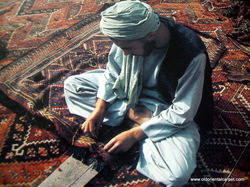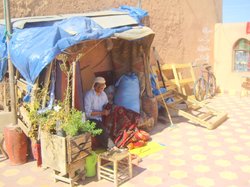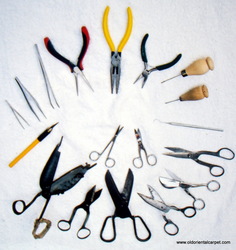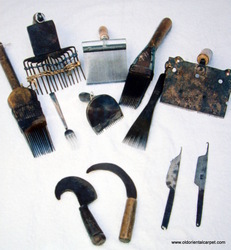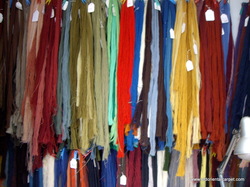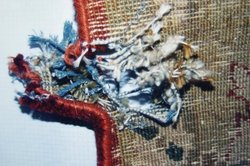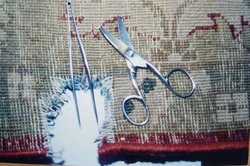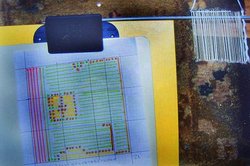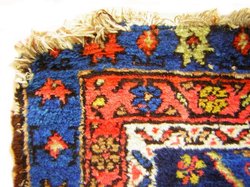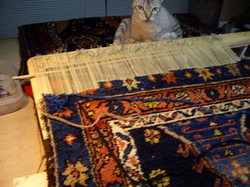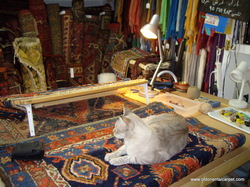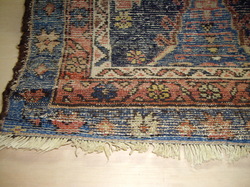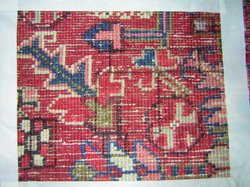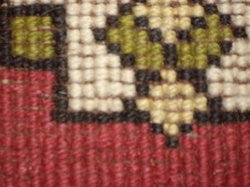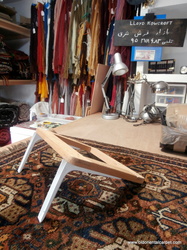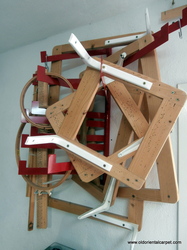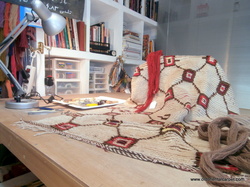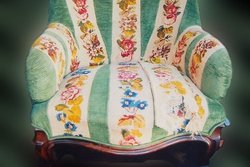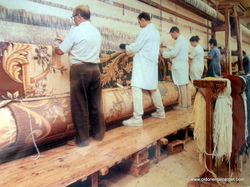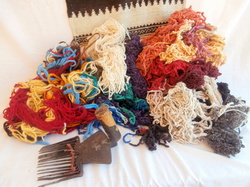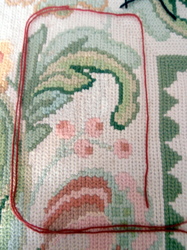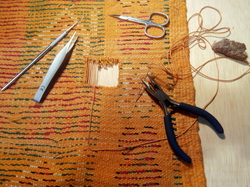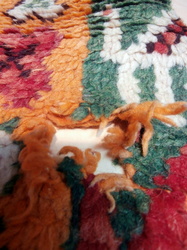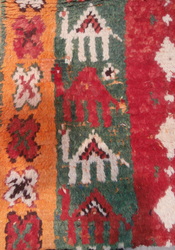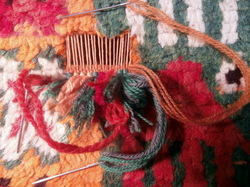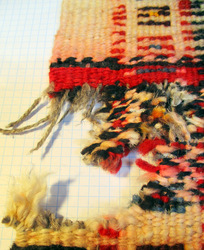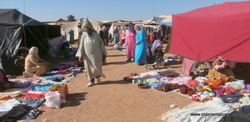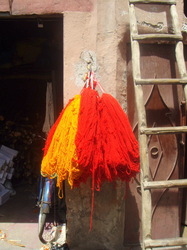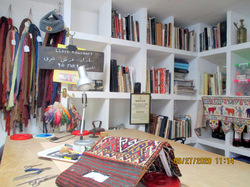RESTORATION. WASHING, FIRST AID, JUSTIFIED REPAIR AND RESTORATION.
ONLY JUSTIFIED WORK UNDERTAKEN.
ADVICE IS FREE.
It makes good sense to have your rugs regularly inspected to ensure you enjoy the original colours and for longevity. Careful use, and not abuse, is the secret for long life. More than 80% of the rugs received in our workshop need simple repair or first aid, rather than major restoration.
Materials, tools, skill and patience are vital for quality repair and restoration. The restorer must be able to copy the style of the original weaver and use the Persian, Turkish, Nepalese, Berber and Spanish knots, as well as techniques used in flat weaves and kilims.
We have hundreds of shades of wool and from them can blend virtually any colour. In addition we have goat, camel, yak and horse hair as well as dozens of cottons and twines, cowrie shells, beads and tassels.
Here are some examples of our work.
